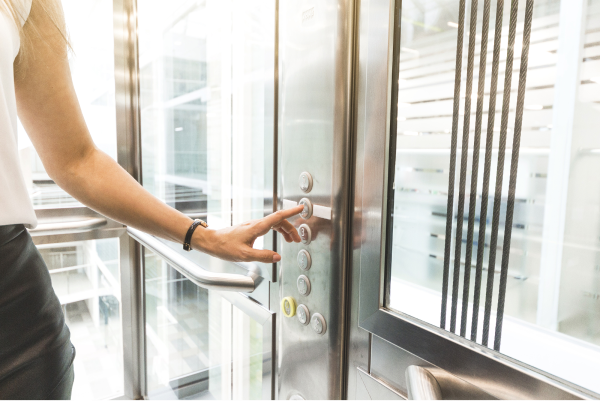A Close Look at the Technology behind Modern Elevators
Today is a great day to be alive. Sure, the world has its challenges, but the advantages far, far outweigh any drawbacks to modern life. And, if you’re disabled or struggling with compromised mobility, you have more options and more solutions available to help you than ever before.
One mobility solution that’s becoming more and more accessible is the home elevator. Not long ago, the high price of home elevators meant that very few homeowners were able to install them. But new technology advances have reduced the space requirements and the cost of home elevators, which means that if you’re struggling with moving between floors in your home, an elevator just might be in your future.

Four Technologies
Traction
Traction-style elevators use the oldest, most common elevator technology: a cable, a pulley, and a counterweight. In a traction elevator, the cab is lifted by steel ropes that roll over a grooved pulley, called a sheave. The cab is balanced by a counterweight. It operates a bit like a seesaw, where the action of the shifting weight creates the ascending or descending motion. In a traction system, there are no fluids required to power the system, just electricity to run the motor.
Many home traction elevators do not require a separate machine room; when you see the MRL (machine room less) designation, you’ll know that the traction elevator and all its components are housed within the shaft. This saves cost and space during the installation.
Traction elevators are typically housed in a closet or custom shaft where they can be inconspicuous. These cabs are fully enclosed and won’t feature glass walls or other design features.
Hydraulic
Hydraulic elevators require a separate space to house the hydraulics. This has pros and cons. On the negative side, a machine room does take up more space in your home, but, on the plus side, the cab itself takes up less room. If you have low ceilings, the fact that hydraulic cabs don’t need extra headroom can be a game changer.
Hydraulic elevators don’t need a concrete shaft; you can place these lifts anywhere. They can have glass walls on three sides and can be an attractive design feature in any home.
Vacuum
Vacuum elevators don’t require an elevator shaft; instead, these self-contained units rest on the ground floor of your home. Vacuum elevators can be very compact; the smallest models require only a 32-inch diameter through hole in the floor. They offer panoramic glass walls on all sides for clear views all around.
Winding Drum
Winding drum elevators are space savers; they do not require separate machine rooms, extensive head room, or deep pits. Screw lifts can be designed with glass on all walls. They are quiet to operate and require the least amount of energy to run of all the elevator options.
Trust Stairlifts of Louisiana
Trust Stairlifts of Louisiana for residential elevators and all your mobility needs. We carry a wide range of mobility solutions including stair lifts, elevators, and auto lifts in Louisiana. Call to speak with one of our mobility solution experts today to see how we can help you travel more freely.









